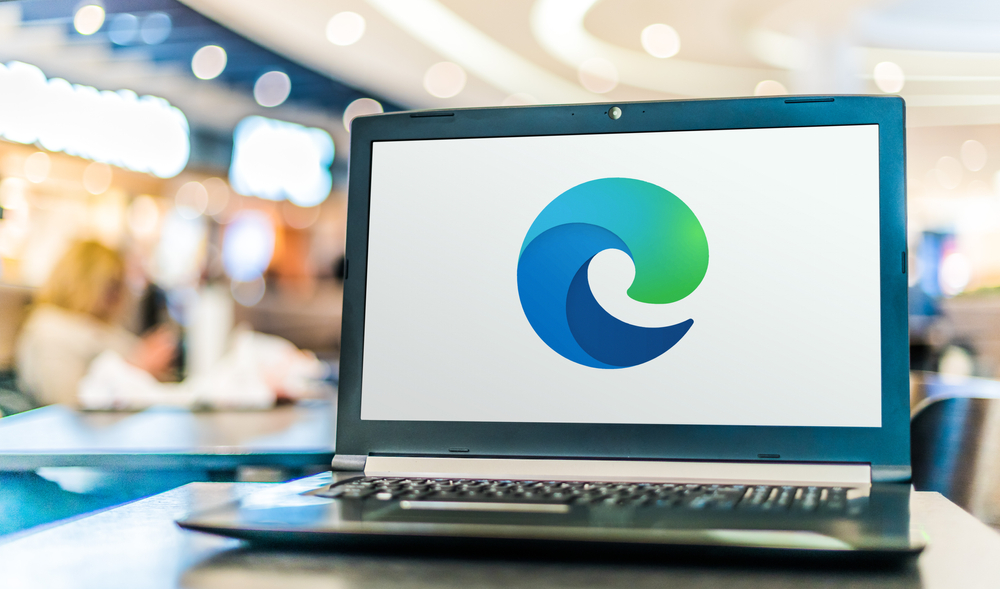Microsoft targets tab hoarders with new Edge features
New features include vertical tabs and an easier-to-access browsing history


Microsoft rolled out cosmetic and usability changes to its Edge browser this month that target power users and casual surfers.
The company has introduced a usability feature in the form of vertical tabs. Driven by users who have dozens or even hundreds of tabs open at a time, the company wanted a way to keep tab titles visible. Instead of using the top of the screen to hold tabs, users can now stack them vertically. The new arrangement includes a visible feature button enabling users to toggle vertical and horizontal tabs.
The vertical tab feature also includes a different color palette to distinguish it from the horizontal mode and a collapsible pane that helps users move tabs out of the way without losing them entirely when they want to see more of a web page.
The company also announced the official performance results of the sleeping tabs beta feature it debuted in January, which release system resources from inactive tabs to help maintain browser performance when users have lots of tabs open. After testing the feature, which users can activate in their browser's settings menu, Microsoft found a sleeping tab uses 26% CPU power compared to a non-sleeping tab and reduces memory usage by 16%.
Microsoft also made a small usability enhancement by introducing a lightweight drop-down menu to access browsing history. This eliminates the need to open the full history page in settings.
The company complemented these enhancements in Edge with changes to its Bing search service to make results more appealing. Microsoft has introduced more detailed infographic-style panels in an apparent move to differentiate itself from Google's text-heavy search results. These panels aggregate information about a search topic in the same way Google’s knowledge panels do, but Bing displays more visual information than Google — at least in some cases.
Bing also now summarizes information more effectively for certain use cases. For example, searching for recipes will highlight ingredients and calories in search results, the company said. In contrast, home improvement and DIY searches bring visual results to the foreground, giving users aesthetic ideas — a clear swipe at Pinterest's model.
Get the ITPro daily newsletter
Sign up today and you will receive a free copy of our Future Focus 2025 report - the leading guidance on AI, cybersecurity and other IT challenges as per 700+ senior executives
In version 80, which arrived in January 2020, Microsoft Edge switched to Chromium, the open-source browser code Google bases its Chrome browser on. Since then, it’s gained market share over Chrome.
Edge version 80 blocked third-party trackers by default and offers three tracking-prevention levels: basic, balanced, and strict. The browser’s latest version introduces contextual help onto its settings page so users can better understand the difference between those options.
The company plans to kill the pre-Chromium Edge version in April by replacing it on users' machines when updating to Windows 10.
Danny Bradbury has been a print journalist specialising in technology since 1989 and a freelance writer since 1994. He has written for national publications on both sides of the Atlantic and has won awards for his investigative cybersecurity journalism work and his arts and culture writing.
Danny writes about many different technology issues for audiences ranging from consumers through to software developers and CIOs. He also ghostwrites articles for many C-suite business executives in the technology sector and has worked as a presenter for multiple webinars and podcasts.
-
 Should AI PCs be part of your next hardware refresh?
Should AI PCs be part of your next hardware refresh?AI PCs are fast becoming a business staple and a surefire way to future-proof your business
By Bobby Hellard
-
 Westcon-Comstor and Vectra AI launch brace of new channel initiatives
Westcon-Comstor and Vectra AI launch brace of new channel initiativesNews Westcon-Comstor and Vectra AI have announced the launch of two new channel growth initiatives focused on the managed security service provider (MSSP) space and AWS Marketplace.
By Daniel Todd